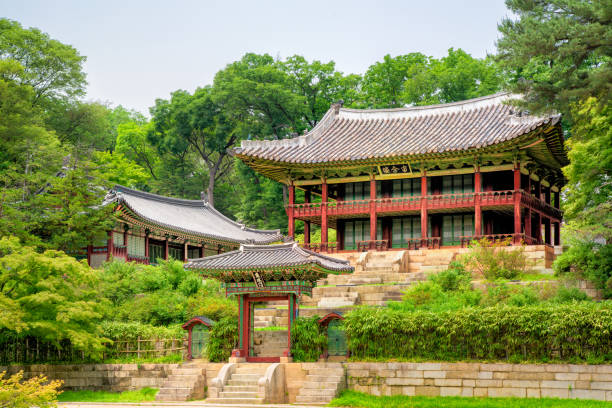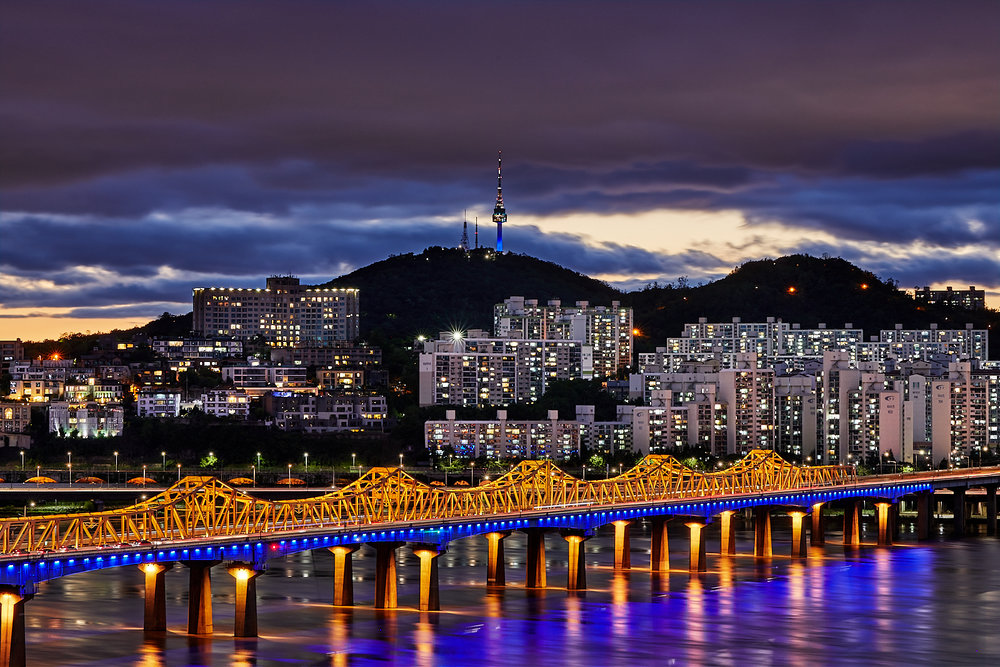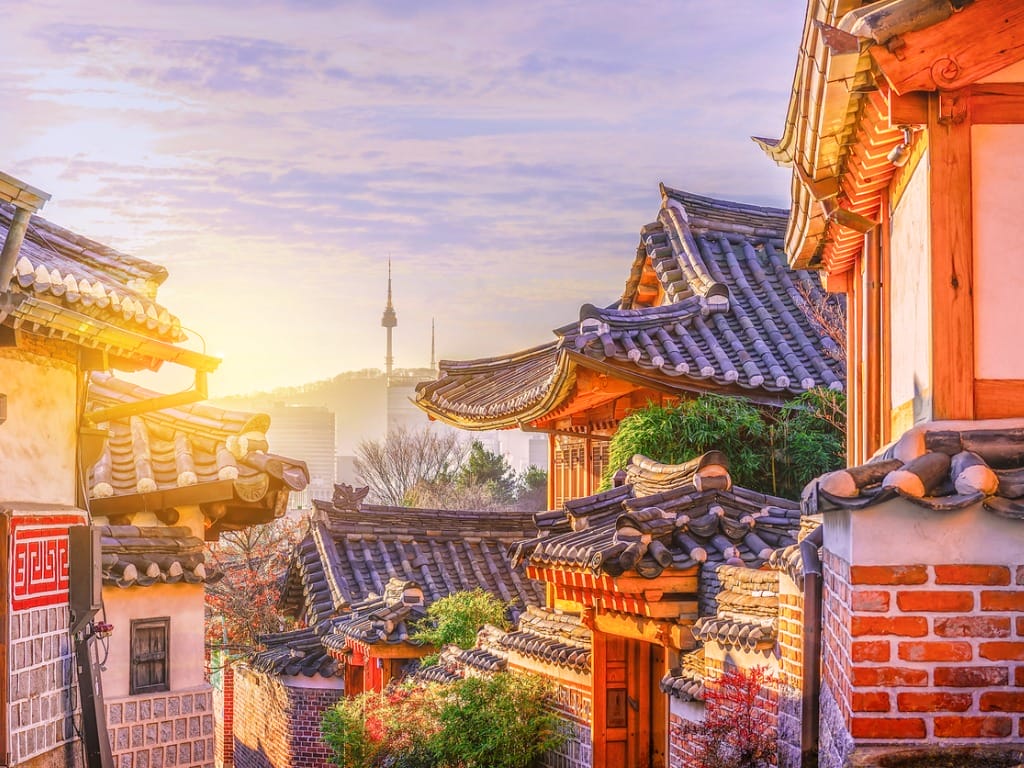South Korea‘s capital city, Seoul, is a vibrant hub of history, modernity, and cultural richness. With a fascinating blend of ancient traditions and contemporary trends, Seoul offers a captivating glimpse into the heart of South Korean culture. In this article, we’ll explore the historical significance of Seoul, its modern cultural landscape, traditional Korean cuisine, fashion and shopping scene, as well as its vibrant nightlife and entertainment options.
The Historical Significance of Seoul
Few cities can boast a history as rich and diverse as Seoul. From the ancient palaces and temples that dot the city’s landscape to the enduring influence of the Joseon Dynasty, Seoul is a treasure trove of historical landmarks and cultural wonders.

Ancient Palaces and Temples
Seoul is home to a myriad of ancient palaces and temples, each with its own unique charm and architectural splendor. Gyeongbokgung Palace, the largest of the Five Grand Palaces, is a testament to the grandeur of the Joseon Dynasty. Visitors can explore its vast grounds, marvel at the intricate craftsmanship, and witness the stunning Changing of the Guard ceremony.
But what lies beyond the majestic walls of Gyeongbokgung Palace? As you venture deeper into the palace complex, you’ll discover hidden courtyards and pavilions, each with its own story to tell. Imagine walking in the footsteps of kings and queens, surrounded by the echoes of a bygone era.
Other notable palaces include Changdeokgung Palace, known for its beautiful Secret Garden, and Deoksugung Palace, which offers a fascinating blend of traditional and Western architectural styles. Each palace offers a unique glimpse into the lives of the royals who once resided within their walls.

As you explore these ancient palaces, take a moment to appreciate the intricate details of the buildings. From the colorful roof tiles to the ornate carvings, every element has a purpose and a story. It’s a testament to the skill and craftsmanship of the artisans who dedicated their lives to creating these architectural marvels.
Within Seoul, there are also numerous Buddhist temples, such as Jogyesa Temple, where visitors can partake in calming meditation sessions and learn about the teachings of Buddhism. The serene atmosphere of these temples provides a welcome escape from the hustle and bustle of the city.
The Joseon Dynasty and its Influence
The Joseon Dynasty, which lasted for five centuries, has left an indelible mark on Seoul’s cultural landscape. Its influence can be seen in the city’s traditional architecture, art, and even in the daily lives of its people.
During the Joseon Dynasty, Confucianism became the dominant philosophical and ethical system. This legacy is evident in the emphasis placed on respect for elders, value for education, and the pursuit of harmony. Seoul’s historic neighborhoods, such as Bukchon Hanok Village, provide a glimpse into the daily life of the Joseon era through well-preserved hanok houses and cultural experiences.
As you wander through the narrow alleyways of Bukchon Hanok Village, you’ll feel as if you’ve been transported back in time. The hanok houses, with their tiled roofs and wooden beams, exude a sense of tranquility and simplicity. It’s a stark contrast to the modern skyscrapers that dominate the city’s skyline.
Immerse yourself in the rich cultural heritage of Seoul by participating in traditional activities, such as wearing a hanbok (traditional Korean clothing) and learning the art of tea ceremony. These experiences offer a deeper understanding of the Joseon Dynasty and its lasting impact on Korean culture.
Seoul’s historical significance goes beyond its architectural wonders and cultural traditions. It is a city that has witnessed the rise and fall of empires, the struggles for independence, and the resilience of its people. To truly appreciate the historical significance of Seoul, one must delve into its stories, explore its hidden corners, and embrace the spirit of its past.
Seoul’s Modern Cultural Landscape
Beyond its historical significance, Seoul is also a dynamic city that embraces modernity and innovation. From the global phenomenon of K-Pop to its thriving contemporary art and design scene, Seoul’s cultural landscape is constantly evolving.
When it comes to modern cultural phenomena, Seoul takes the crown with its world-renowned K-Pop industry. K-Pop, short for Korean Pop, is not just a genre of music but a cultural movement that has captured the hearts of millions around the globe. With its infectious tunes, impeccably synchronized choreography, and visually stunning music videos, K-Pop has become a global sensation.
Visitors to Seoul can immerse themselves in the vibrant K-Pop scene by exploring entertainment districts like Gangnam, known for its glitz and glamour. Here, you can find numerous K-Pop agencies, recording studios, and even dance studios where aspiring K-Pop stars train tirelessly to perfect their craft.
For those seeking an authentic K-Pop experience, attending live performances is a must. The iconic SM Town Coex Artium is a popular venue that hosts regular concerts and showcases the talents of some of the biggest K-Pop acts. The energy and excitement of a live K-Pop performance are truly unforgettable.
To fully appreciate the impact of K-Pop on Seoul’s cultural landscape, a visit to the K-Star Road in Apgujeong is essential. This unique street is lined with statues and murals honoring the city’s most beloved K-Pop idols. Fans can walk in the footsteps of their favorite stars and capture Instagram-worthy photos along the way.
The Contemporary Art and Design Scene
Seoul’s cultural offerings extend beyond the realm of music. The city boasts a thriving contemporary art and design scene that attracts artists and enthusiasts from all over the world.
Art lovers can explore the numerous art galleries and museums that showcase a diverse range of works, from traditional Korean art to cutting-edge contemporary pieces. The National Museum of Modern and Contemporary Art, located in the heart of Seoul, is a must-visit for anyone interested in exploring the city’s artistic heritage.
One of Seoul’s architectural gems is the Dongdaemun Design Plaza, designed by the late Zaha Hadid. This futuristic structure stands as a testament to Seoul’s commitment to creativity and innovation. Inside, visitors can find fashion boutiques, art exhibitions, and even attend major fashion events like Seoul Fashion Week. The plaza serves as a hub for designers, artists, and fashion enthusiasts, making it a vibrant center of artistic expression.
Seoul’s contemporary art and design scene is not limited to established institutions. The city is also home to a myriad of independent art spaces and design shops, where emerging talents showcase their unique perspectives. Exploring these hidden gems allows visitors to discover the pulse of Seoul’s artistic community and witness the exciting evolution of contemporary art and design.
Traditional Korean Cuisine in Seoul
No trip to Seoul would be complete without indulging in its mouthwatering cuisine. Korean food is known for its bold flavors, fresh ingredients, and intricate preparation techniques.
Seoul offers a diverse range of culinary experiences that cater to every taste and preference. Whether you’re a street food enthusiast or a connoisseur of fine dining, the city has something to satisfy your cravings.

Street Food Culture
Seoul is a food lover’s paradise, particularly for those who enjoy street food. The vibrant streets of the city are lined with stalls offering a wide variety of delectable treats. Each bite is a burst of flavor that showcases the rich culinary heritage of Korea.
One popular street food destination is Gwangjang Market, a bustling hub of gastronomic delights. Here, visitors can immerse themselves in the lively ambiance and indulge in an array of authentic Korean snacks. From the spicy rice cakes known as tteokbokki to the sweet pancakes filled with sugar and nuts called hotteok, there is something to tantalize every taste bud.
For those looking to explore beyond the familiar, Gwangjang Market also offers unique culinary creations such as bindaetteok, mung bean pancakes that are crispy on the outside and soft on the inside. Another must-try is kimbap, a popular Korean street food made of seaweed-wrapped rice rolls filled with various ingredients like vegetables, meat, or fish. Each bite is a burst of flavors and textures that will leave you craving for more.
Fine Dining and Michelin-Starred Restaurants
Seoul’s culinary scene extends beyond street food, offering a world-class fine dining experience that rivals any global city. The city is home to a number of Michelin-starred restaurants that showcase the best of Korean cuisine.
One such restaurant is Jungsik, which has earned multiple Michelin stars for its innovative approach to Korean gastronomy. Jungsik takes traditional Korean dishes and reinvents them with modern techniques and presentation. The result is a harmonious blend of flavors and textures that take diners on a culinary journey.
Another Michelin-starred gem is Gaon, a restaurant that celebrates the rich culinary traditions of Korea. Gaon’s menu features meticulously crafted dishes that highlight the natural flavors of the ingredients. From the first bite to the last, diners are treated to a symphony of flavors that showcase the skill and artistry of the chefs.
Seoul’s fine dining scene is not limited to Korean cuisine alone. The city also offers a plethora of international fine dining options, ranging from French to Japanese. Whether you’re in the mood for a perfectly seared steak or a delicate sushi roll, Seoul has a restaurant to satisfy your cravings.
Seoul truly is a haven for food enthusiasts. From the bustling streets filled with aroma and excitement to the refined elegance of Michelin-starred restaurants, the city offers a culinary experience like no other. So, when you find yourself in Seoul, be sure to embark on a gastronomic adventure that will leave you craving for more.
Fashion and Shopping in Seoul
Seoul, the vibrant capital city of South Korea, has emerged as a global fashion capital, known for its unique style and trendsetting designs. With a perfect blend of traditional and contemporary influences, Seoul’s fashion scene has captivated the world’s attention. From local markets to luxury malls, Seoul offers a shopping experience that is as diverse as its fashion scene.
From Local Markets to Luxury Malls
Seoul’s shopping options cater to every budget and taste. For those seeking affordable fashion finds and quirky accessories, markets like Myeongdong and Namdaemun offer a wide selection of trendy clothing and accessories. These bustling markets are a treasure trove of fashion, where both locals and tourists can find stylish pieces at reasonable prices.
On the other end of the spectrum, luxury shopping districts like Apgujeong and Cheongdam-dong are home to high-end fashion boutiques and flagship stores of renowned international brands. These upscale areas are frequented by fashion enthusiasts and trendsetters who are looking for the latest designer pieces and exclusive collections. It’s here that fashion enthusiasts can immerse themselves in the glamorous world of Seoul’s fashion elite.
Seoul’s shopping districts are not only about the products they offer but also about the unique experiences they provide. Walking through the vibrant streets of Myeongdong, one can feel the energy and excitement as shoppers explore the countless stalls and shops. In contrast, the luxury malls of Apgujeong exude sophistication and elegance, with their sleek architecture and designer storefronts.

The Influence of Korean Fashion Globally
Seoul’s fashion influence extends far beyond its borders. Korean street fashion, with its emphasis on individuality and experimentation, has captivated the global fashion industry. The streets of Seoul are like a runway, where people express their personal style through bold and innovative fashion choices.
Korean designers like JUUN.J and Rejina Pyo have gained international acclaim for their unique aesthetics and avant-garde designs. Their creations have been worn by celebrities and featured in prestigious fashion magazines worldwide. Seoul Fashion Week, a biannual event that showcases the best of Korean fashion, has become an important event on the global fashion calendar. It attracts fashion editors, buyers, and influencers from around the world, all eager to witness the next big trend.
Visitors to Seoul can explore concept stores and independent boutiques, where they can discover the next big names in Korean fashion. These hidden gems offer a curated selection of emerging designers and niche brands, providing a glimpse into the future of fashion. From avant-garde streetwear to minimalist luxury, Seoul’s fashion scene is a melting pot of creativity and innovation.
Aside from shopping, Seoul also offers a range of cultural experiences that are intertwined with fashion. Traditional hanbok, the elegant Korean attire, is experiencing a revival in popularity among locals and tourists alike. Many stores in Seoul offer hanbok rentals, allowing visitors to immerse themselves in the rich heritage of Korean fashion.
Whether you’re a fashion enthusiast or simply looking to update your wardrobe, Seoul is a city that will inspire and excite. Its dynamic fashion scene, from local markets to luxury malls, offers something for everyone. So, grab your shopping bags and get ready to explore the fashion capital of Seoul!
Seoul’s Nightlife and Entertainment
When the sun goes down, Seoul comes alive with a vibrant nightlife and a spectrum of entertainment options.
Night Markets and Street Performances
Seoul’s night markets are a feast for the senses, offering a mix of shopping, dining, and live entertainment. One popular night market is Dongdaemun Night Market, where visitors can shop for fashion, accessories, and electronics, all while enjoying street performances and delicious street food.
Another must-visit location is Hongdae, known for its bustling nightlife and vibrant street performances. Visitors can explore the indie music scene, visit trendy bars and clubs, and witness talented street performers showcasing their skills.
Clubs and Music Venues
Seoul’s clubbing scene is world-renowned, offering an energetic and diverse mix of music genres. From techno to hip-hop, clubs like Octagon and Club Ellui attract both local partygoers and international visitors.
In addition to clubs, Seoul also boasts numerous music venues where visitors can catch live performances by local and international artists. Venues like Zandari Festa and Blue Square iMarket Hall showcase the city’s thriving music scene and provide unforgettable experiences for music lovers.
A visit to Seoul is an immersion into the heart of South Korea’s cultural hotspot. From its rich history and modern cultural landscape to its tantalizing cuisine and vibrant nightlife, Seoul offers a captivating glimpse into the beauty and diversity of South Korean culture. Whether you’re exploring ancient palaces, indulging in street food, or experiencing the excitement of the K-Pop scene, Seoul is guaranteed to leave a lasting impression on all who visit.



